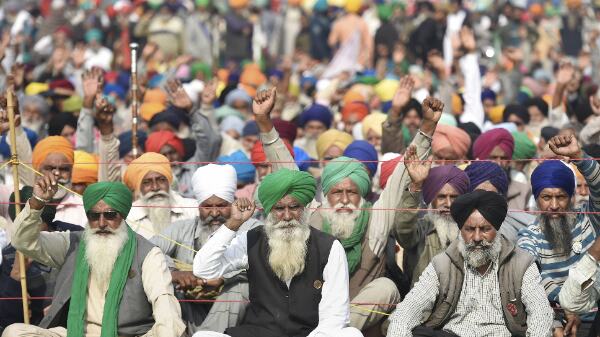Undocumented?

The past 4-5 years have been the years of hope for the vast farming community of India. The farmers are indeed dying and each death needs to be recognized and lamented upon. But there is much to be hopeful — these farmers are dying in protests, fighting against the injustices they have been subjected to for decades. These deaths are, of course, disheartening but not as much as the lakhs of suicides during the past few decades — where death was the only choice. Things have changed this way — be it the 2018 march to the Parliament to make their grievances heard before the People of India, or the current protests where they have shown commendable spirit in standing up for their cause. What has not changed though is the government's approach. Union Minister Narendra Singh Tomar said Friday that the Centre has no record of the death of farmers during the protest period around the national capital and in some states. Subsequently, the Punjab Government came up with its verified record of the death of 220 farmers. Farmers unions are also planning to compile the number of deaths during the farmers' protests, which they say may be over 500. This chaos is no different from the contradictions in the documentation of death due to the suicide of farmers over decades. As per the Government's 2011 Census data, more than half of the country's workforce has been engaged in the agriculture sector — including cultivators and agricultural labourers. These workers have been ending their lives, which lacked proper documentation until 2014 when National Crime Records Bureau came up with the data suggesting the suicide death of 6,750 agricultural workers in the year. And the number keeps fluctuating every year (the report was not made public in 2017). Agricultural experts suggest that the recorded numbers are grossly underreported. This is no hidden fact that the agriculture sector is home to extensive disguised unemployment — meaning that all who work in the fields are not counted as being employed in the sector. On the ground, the entire family in a low- or middle-income group gets involved in the farming activity. Women constitute a major part of the agricultural workforce but are highly likely to be counted out. The suicide figures we have been going through all these years may represent just a fraction of the actual deaths. What is even more surprising is that many agricultural economy states like Bihar had, in the past, declared zero suicides in some years. P Sainath rightly puts the existing situation in the agriculture sector as a "social and civilizational crisis" rather than just an agrarian crisis. It is after this crisis has reached the saturation point that the farmers have started showing up in massive protest, changing the way they live and die! The government should also change the way it perceives and counts the members of this community. The solution to this deep-rooted agrarian crisis cannot come through a straight and simple formulation of law without appropriate deliberation. There has to be a massive exercise that would start from recognizing the different sets of problems faced by Indian farmers in different parts of the country. This diversity of topographical features, crop pattern, socio-economic conditions of farmers, and state provisions adds greatly to the complexity of the issue. While the farmers from Punjab, Haryana and UP are making headlines in Delhi, the Vidarbha farmer might just be waiting for the double-edged sword of drought-flood cycle to destroy the little that she/he has. Water scarcity remains a haunting problem in this region, getting worse with each passing year. The farmers in Bihar may not have much to relate with the protesting farmers in Delhi, as they have already lost their mandis a decade ago and they work under the increased influence of middlemen. These farmers are not just facing the ravages of a flood, they may also have more wounding problems like lack of formal credit among other things.
It is welcome that the Central government has shown some intent for the welfare of the farmers. But it can be asked if these steps are broad enough to solve the diverse range of problems that the farmers are facing on the ground in different parts of the country. Provision for guaranteed MSP in accordance with the Swaminathan Committee Report, and the uncertainty over the sustainability of mandis under new framework are two broad-based issues that will impact a major portion of the farming community. But there is a lot more that needs to be done to find a solution to the crisis. The deadlock between the government and the farmers is significantly hurting the process of empowering our food-givers. At this point, it would be wrongful to expect the farmers to head backwards without having their problems addressed. The government should initiate a more comprehensive process by taking on board the representatives of farmer groups from all across the country, make a detailed assessment of different issues faced by them, and look for a more amicable and comprehensive solution. In a nutshell, it is not just the lives and deaths of the farmers that need to be properly documented, but also their problems and concerns. Then only the talks of farmer welfare will have any meaning and real solutions could be found.



